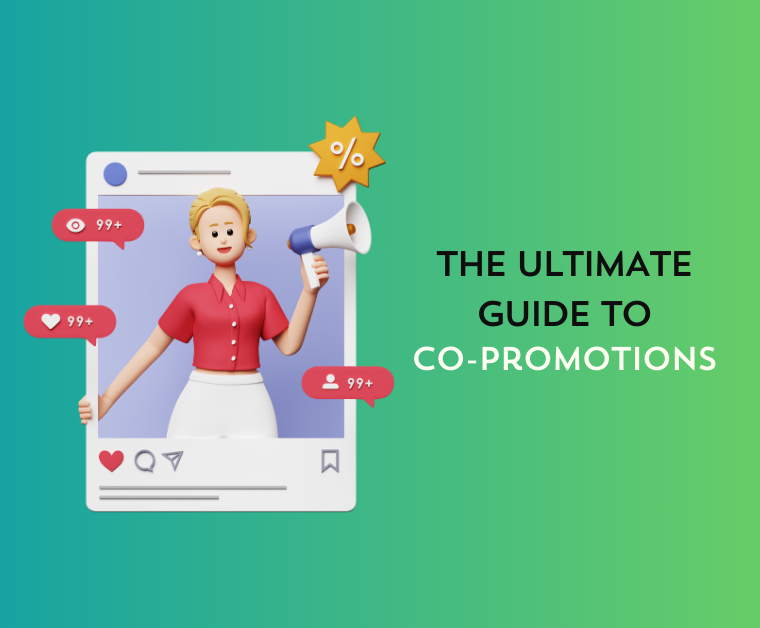Contents
What are Co-Promotions?
Co-promotions are a marketing strategy, where two organizations with similar target audiences team up for a promotional marketing campaign. Their main goal is to increase sales by promoting each other's products to their respective audiences. This usually involves special deals, discounts, or compelling messages to get people to try or buy what they offer.
Co-Marketing vs Co-Promotions
Co-Marketing
Co-Marketing, is a marketing collaboration between two organization which includes co-promotions, collaborating on content, co-branding new products or services or co-hosting events.
Co-Promotion
Co-Promotions are Co-Marketing campaigns where partners cross-sell to each other’s audience with the goal of directly influencing trials or sales, often targeting results in a short timespan.
Co-Promotion Strategies
Co-promotions are often created with some kind of offer or incentive to persuade their partners’ audiences to engage with them, to ultimately capture new leads or customers.
1. Bundle Co-Promotion
A collaborative offering, where partners offer a bundle on their combined products and/ or services to both their combined audiences. This works particularly well if both target markets are very similar, and in need of their complimentary services.
An example of this might be Reference Checking Software and Background Checking Service, offering a discount when you buy both services together.
2. Exclusive Discount Promotion
This is a non-collaborative offering, where both partners create an exclusive discount on their product and leverage the other partner’s shared and owned channels to drive interest.
An example of this might be a Marketing Analytics Software and a Marketing Project Management Software. When using one, you’ll be offered a discount on the other.
3. Giveaway Promotion
A giveaway promotion often entails selling a product or service at full price but with an additional product for free. In co-promotion, this might work well if giving away something valuable from the partner company.
An example of this might be a food delivery service & streaming platform, offering a free month of streaming with every certain number of orders, or a discount on food delivery when subscribing to the streaming service.
4. Non-Reward Driven
There are lots of other opportunities, including messaging that doesn't offer a reward that might fit better into your brand's marketing. For instance if you sell to a luxury market or to enterprise customers, discounts might not be on-brand. Other options might include extended moneyback guarantees, exclusive access, competitions or sharing social proof.
Pros & Cons of Co-Promotions
Advantages
Challenges
How to Successfully Execute a Co-Promotion
1. Define Goals
2. Find the Right Partner
3. Agree on Objectives
4. Create a Compelling Offer
5. Sign a Formal Agreement
6. Leverage Owned and Shared Media
7. Ongoing Communication
8. Measure and Analyze Results
Co-promotions offer an exciting way for you to expand your reach, save costs, and achieve short-term results. By carefully selecting the right partner, setting clear goals, and creating compelling offers, you can achieve significant marketing results. As with any strategy, it’s important to be aware of potential challenges and approach them with a well-thought-out plan. When executed correctly, co-promotions can be a win-win for businesses and customers alike.


